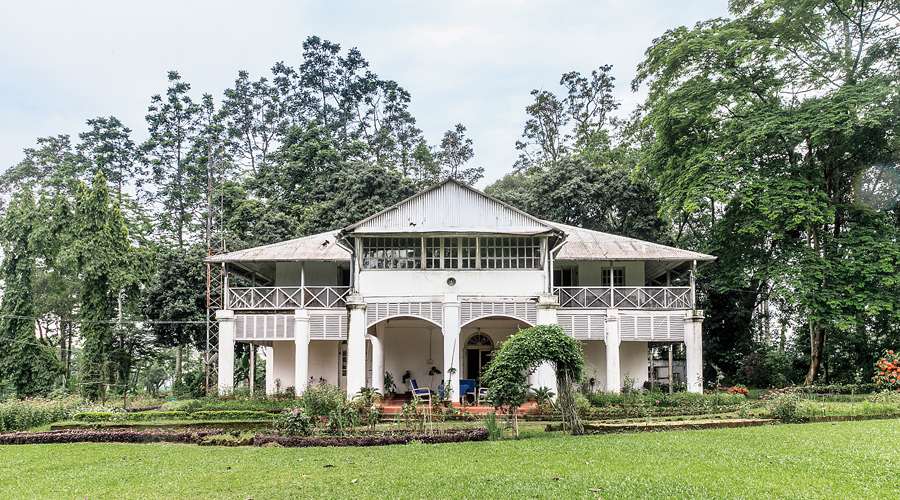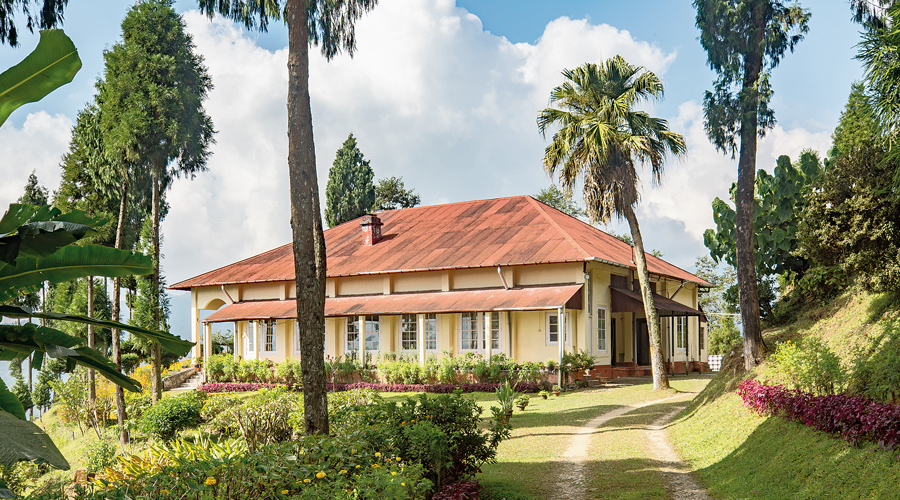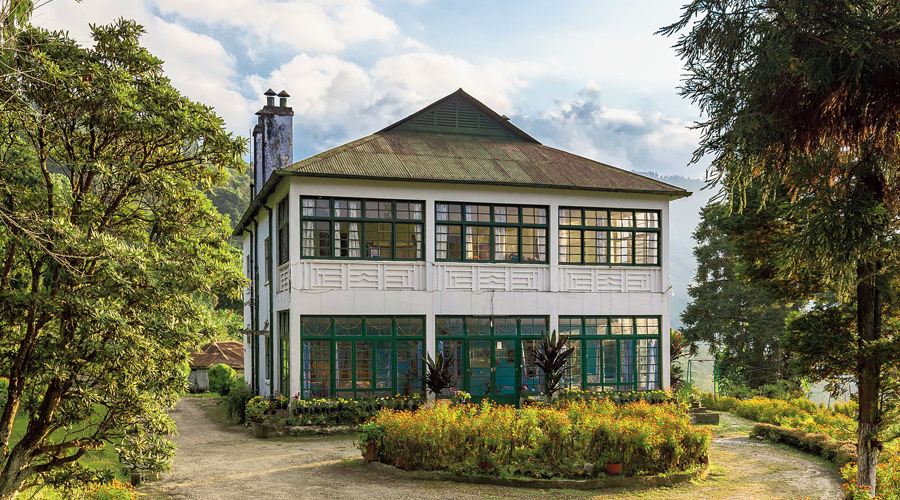Heritage bungalows in the hills of north Bengal are replete with stories, stories of the second flush harvest, of the torrential rain wiping out all vestiges of roads, of wild elephant herds visiting well laid out gardens, of cocktail parties stretching into the little hours of the morning, of the majestic Kanchenjunga in clear moonlight and not to forget the resident bhoot in the burra bungalow.
The word burra bungalows come from the term burra sahibs. In tea gardens the managers were referred to as burra sahib or the big boss by the workers.
Documenting and photographing all this and more is a book Burra Bangalows of North Bengal: Glimpses of Built Heritage and Lifestyle of Tea Estate in North Bengal, published by Intach, Calcutta with support of West Bengal Tourism Development Corporation Limited. Covering 140 bungalows in Darjeeling and the Dooars and the Terai region, this book gives a glimpse of the sprawling residences of the burra sahibs, complete with pictures of the compounds, gardens, porticos, master bedrooms, living space, fireplaces, and even furniture. Along with the pictures are texts by members of the tea community, describing the planters’ lives. There is also a travel guide to north Bengal by the state tourism corporation which lists its tourist lodges and places to visit and also shares tips for the tourists.

The bungalow at Carron Tea Estate

The bungalow at Dooteriah Tea Estate
“We had done a book on burra bungalows of Assam a few years back. We have done a similar thing with north Bengal. Today, with space being at such a premium, it is important to document these bungalows because one never knows when they will disappear. In Assam, we photographed the only thatched burra bungalow existing. In north Bengal, we documented the bungalow of Makaibari which was devastated in a fire in 2017,” said G.M. Kapur, convener, Intach Calcutta.
“The burra bungalows were more than homes, they were status statements,” said Nandini Chakravorty, principal secretary, tourism department, government of West Bengal. “It has been said that the planters were wedded to their tea estates and built bungalows that were of architectural and historical significance,” she added.

The bungalow at Kumlai Tea Estate
The burra bungalows were typically single or double storied with a flower garden (Phool Bagan), and a vegetable garden (Maali Bari). Some also had swimming pools and tennis courts. Inside were spacious living rooms with fireplace. A bar was common to these bungalows. Bedrooms had attached washrooms (Gusalkhanas), which are spacious enough to accommodate a modern day flat. The washrooms were preceded by changing rooms. Guest rooms are also common, particularly if the bungalow was two-storied. They also had a Jaali Kamra (room with a net) as the sahib’s smoking area or leisure room complete with a billiard table.
Photographer Nikhil Kapur, who has extensively shot at the locales, said: “North Bengal has over 500 tea gardens. After much research we were able to shortlist about 140. This was done keeping in mind the gardens that still had colonial bungalows with minimal and no modification and in fair condition. The tea community helped us out in this tremendously.”
Reaching the burra bungalows was no mean feat. Most of them are in remote locations and roads are a 4x4 territory, said Nikhil.










